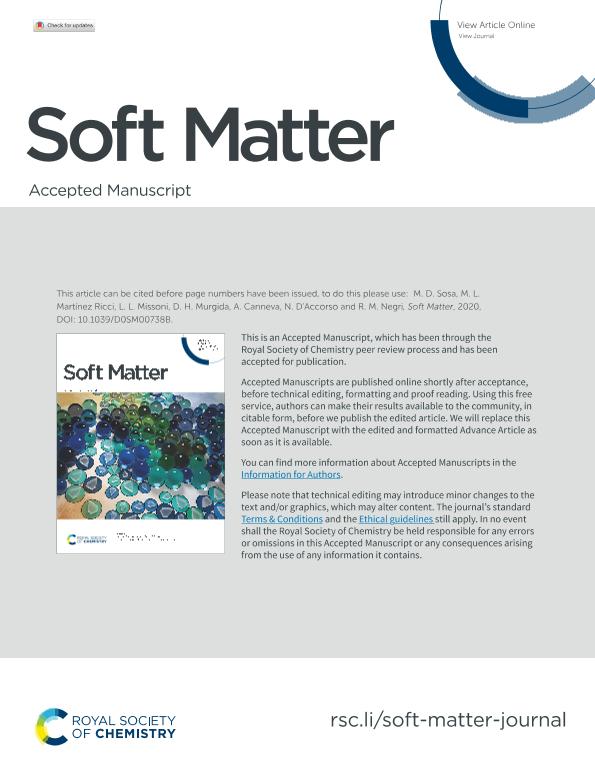Artículo
Liquid-polymer triboelectricity: Chemical mechanisms in the contact electrification process
Sosa, Mariana Daniela ; Martinez Ricci, Maria Luz
; Martinez Ricci, Maria Luz ; Missoni, Leandro Luis
; Missoni, Leandro Luis ; Murgida, Daniel Horacio
; Murgida, Daniel Horacio ; Canneva, Antonela
; Canneva, Antonela ; D'accorso, Norma Beatriz
; D'accorso, Norma Beatriz ; Negri, Ricardo Martin
; Negri, Ricardo Martin
 ; Martinez Ricci, Maria Luz
; Martinez Ricci, Maria Luz ; Missoni, Leandro Luis
; Missoni, Leandro Luis ; Murgida, Daniel Horacio
; Murgida, Daniel Horacio ; Canneva, Antonela
; Canneva, Antonela ; D'accorso, Norma Beatriz
; D'accorso, Norma Beatriz ; Negri, Ricardo Martin
; Negri, Ricardo Martin
Fecha de publicación:
08/2020
Editorial:
Royal Society of Chemistry
Revista:
Soft Matter
ISSN:
1744-683X
Idioma:
Inglés
Tipo de recurso:
Artículo publicado
Clasificación temática:
Resumen
The liquid-polymer contact electrification between sliding water drops and the surface of polytetrafluoroethylene (PTFE) was studied as function of pH and ionic strength of the drop as well as ambient relative humidity (RH). The PTFE surface was characterized by SEM, water-contact-angle measurements, FTIR, XPS, and Raman spectroscopy. The charge acquired by the drops was calculated by detecting the transient voltage induced on a specifically designed capacitive sensor. It is shown that water drops become positively charged at pH> pHzch (being pHzch the zero charge point of the polymer), while negatively charged for pH< pHzch. The addition to the water of non-hydrolysable salts (NaCl, CaCl2) decreases the electrical charge induced in the drop. The charge also decreases with increasing RH. These results suggest proton or hydroxyl transfer from the liquid to the hydrophobic polymer surface. A proposed thermodynamic model for the ion transfer process allows explaining the observed effects of RH, pH and ionic strength.
Archivos asociados
Licencia
Identificadores
Colecciones
Articulos(CIHIDECAR)
Articulos de CENTRO DE INVESTIGACIONES EN HIDRATOS DE CARBONO
Articulos de CENTRO DE INVESTIGACIONES EN HIDRATOS DE CARBONO
Articulos(INQUIMAE)
Articulos de INST.D/QUIM FIS D/L MATERIALES MEDIOAMB Y ENERGIA
Articulos de INST.D/QUIM FIS D/L MATERIALES MEDIOAMB Y ENERGIA
Citación
Sosa, Mariana Daniela; Martinez Ricci, Maria Luz; Missoni, Leandro Luis; Murgida, Daniel Horacio; Canneva, Antonela; et al.; Liquid-polymer triboelectricity: Chemical mechanisms in the contact electrification process; Royal Society of Chemistry; Soft Matter; 16; 30; 8-2020; 7040-7051
Compartir
Altmétricas



